When I found out the other editors were going to make me definitively rank the decade in television, I kicked and screamed and huffed. It is damn near impossible to rank TV shows these days. I don’t even do an annual ranked list, let alone attempt to rank an entire decade of television, and the reason behind this became clear very early in this process. Conversations on the TV team about which shows to include devolved into an existential discussion about the nature of television. Is YouTube TV? Do shows that originally only aired online make the cut? What if a show started off really good and then got bad—or vice versa? If a series started in the aughts and finished in the 2010s, which decade is it in? Can a series that only came out in 2019 qualify for a best show of the decade? (At one point I threw my hands up and declared that .gifs were now eligible for the decade list.)
But y’know what? Through all the blood and sweat and tears, we did it! We ranked our top 30 television shows of the decade, and the result is an incredible showcase of the diversity of television, the mind-boggling talent of our writing staff, and the unique perspective our little corner of the internet has to offer. Without further ado, please enjoy Merry-Go-Round’s Top TV Shows of the 2010s! [Kate Brogden, TV Editor]

30. TRANSPARENT (Amazon Video)
Summarizing TRANSPARENT, Jill Soloway’s critical darling and early flagship for Amazon Prime, is easier said than done. This is thanks in large part to its proclivity for flipping the script at every turn. Maura Pfefferman’s gender transition was certainly the main attraction early in the series’ run, but it didn’t take long for the rest of her family—estranged wife Shelly and their adult children Sarah, Josh, and Ali—to become compelling leads in their own right. The spotlight would gradually shift to cover the greater Pfefferman clan as a unit, leading to a broader focus around LGBT+ and Jewish culture. Much like the characters it follows, TRANSPARENT discovered itself, developing themes of community, reinvention, and perseverance. TV dramas about the malaise of the affluent are a dime-a-dozen, and while the Pfeffermans certainly love to stew in their respective angsts, they also let their hearts pull them in wildly disparate directions before returning home. TRANSPARENT’s four-seasons-and-a-musical run felt like an epic journey more reminiscent of GAME OF THRONES than MODERN FAMILY; dangerously bingeable and incredibly affirming, TRANSPARENT is impossible to look away from once you begin. [Ed Dutcher]

29. THE WALKING DEAD (AMC)
Ah, 2010. A far-off time when people weren’t sick of zombies yet and shambling, cannibalistic corpses were seen as a threat instead of something you ignore at the box office. THE WALKING DEAD was lucky in that it already had at least a small built-in audience in the fans of the original graphic novels, but it didn’t even need that boost. The show skyrocketed to popularity, boasting a whopping nine seasons and a spin-off, putting Georgia on the map as a new hub for film production, not to mention creating brand new jobs. (Snake-wrangler! It’s real, look it up). The show pretty quickly veered off from the story of the graphic novels and became its own thing, which was less about zombies who want to chomp your neck and more about the interpersonal relationships between people just trying to survive. Breakout characters like Norman Reedus’ Daryl Dixon and love-to-hate him Negan really made the show and kept people coming back for more, even in the much weaker later seasons. Despite viewership dropping significantly in the series’ twilight years, THE WALKING DEAD remained appointment TV even as the era of streaming began, and has had such a huge cultural impact on hour-long television, we would be remiss if we did not mention it in this round-up. [Anna Mansager]
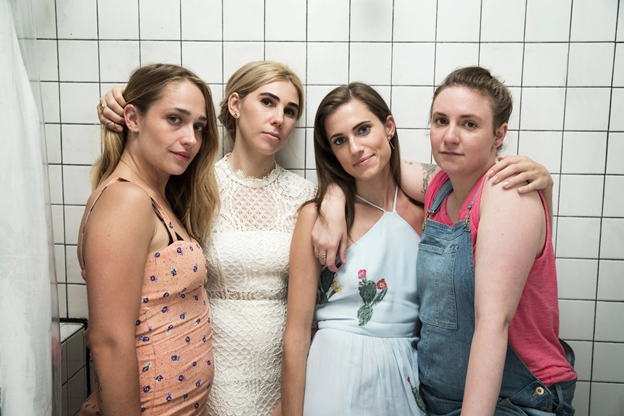
28. GIRLS (HBO)
In 1998, SEX AND THE CITY introduced us to Carrie, Samantha, Miranda, and Charlotte: four gals bein’ pals, navigating the pitfalls of dating in New York City in their 30s, while our main character Carrie struggles to make it as a writer. In 2012, GIRLS introduced us to Hannah, Jessa, Shoshanna, and Marnie: four gals bein’ pals, navigating the pitfalls of dating in New York City in their 20s, while our main character Hannah struggles to make it as a writer. Deja vu? Well, yeah—nobody’s out here making a case for HBO’s GIRLS as the cutting edge of original, inventive content in the 2010s. It’s very transparently the millennial update to SEX AND THE CITY, and its legacy is complicated to say the least. But it secured a spot on this list for the way it pushed the boundaries of content in its time, and set the stage for the issues we’d reckon with in the latter half of the decade. Oh—and it made me cry buckets. Just big, wet, snotty, ugly crying in my college dorm room.
Let’s look at the good stuff. I was a bit younger than the target demographic when I started watching GIRLS, but even so, the amount of times it perfectly captured an experience I had was pretty surreal. In the pilot episode, Hannah tries unsuccessfully to explain to her parents why she isn’t being paid for her internship and why she can’t just walk into her boss’ office and demand a full time job. Its character development and writing are unmatched. The titular girls aren’t going to be sipping cosmos together on Hannah’s 50th birthday; the slow-motion death of these relationships over the course of the series lends an underpinning of despair that was revolutionary in a “comedy” at this time. It also let its ancillary characters shine, launching the TV career of America’s Sweetheart Andrew Rannels and providing the first truly defining role for Adam Driver, whose weird-hotness fascinated me even in 2012. I also personally credit GIRLS for perfecting the bottle episode. After the vitriol surrounding the infamous “Fly” episode of BREAKING BAD, I wouldn’t have been surprised if the stunt bottle episode died off completely in prestige television. However, GIRLS’ handful of bottle episodes are among the best of the series: “The Panic in Central Park,” “One Man’s Trash,” and “Beach House” are all must-watches. Finally, critics go back and forth about whether Lena Dunham’s nudity was a positive or a negative, but I’m going to concede this one to Lena. At least for me, hers was the first “normal” naked body I ever saw on television. It was a bold risk that—I think—paid off in the long run.
On the other hand… GIRLS has a reputation for being the peak of white millennial feminism, and even as a fan of the show, this criticism is completely earned. The entire core and supporting cast are white, live in gorgeous New York City apartments, and even while they struggle with their goals and interpersonal relationships, nobody ever struggles that much. (This was captured brilliantly in an SNL sketch at the time.) Dunham tried to address the whiteness issue in an episode where she briefly dates a black man played by Donald Glover, only to find out that he’s (gasp!) a Republican!! It was a blatant swing and miss that pointed to just how tone-deaf the show actually was as it relates to race. Many of Adam’s sexual encounters with the women on the show are… uhh… dubiously consensual at best. And of course, there’s the infamous grand finale where Hannah achieves the peak of her womanhood by becoming a mom and breastfeeding her child! I understand the intent of this was to show an inherently selfish person learning to care about another human being, but it was (again) tone-deaf for one of the most progressive shows at the time.
This is a complicated series with complicated characters and a complicated legacy. And yet, the 2010s were complicated. Through all its hits and misses, GIRLS met us where we were at this decade: trying, failing, succeeding, and stumbling our way through. [Kate Brogden]
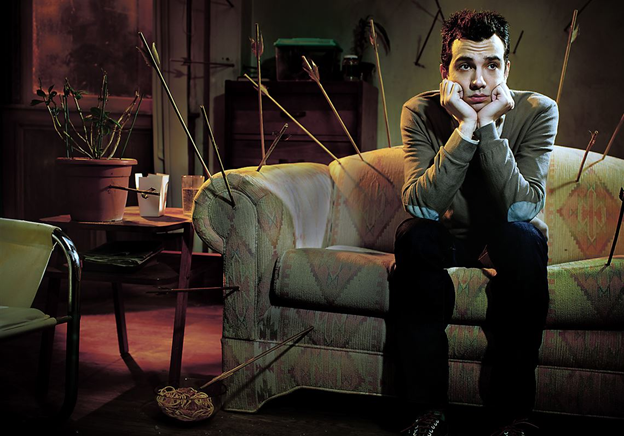
27. MAN SEEKING WOMAN (FXX)
We are gathered here today to mourn the loss of FXX’s MAN SEEKING WOMAN, one of the best shows of this decade no one seemed to know about. Killed in its infancy after only three seasons, the show’s weird and delightful light went out before it could see itself become the villain. We remember Jay Baruchel, who stars as Josh, the affable, awkward every-man, always fumbling through love with Eric Andre, playing the eternal-bachelor devil on his shoulder, and Britt Lower as his sister Liz, the guiding voice of reason. We don’t want to think of MAN SEEKING WOMAN simply as a show that was taken too young, but rather as it would want to be remembered: for its genius and hilarity. Born of creator Simon Rich, MAN SEEKING WOMAN lived its three seasons as a vibrant exploration of familiar circumstances through literal interpretation and surreal twists. It created a world where a blind date with a “troll” means Gorbachaka, the creature from under the Wabash bridge, or where mom holding Josh “hostage” is not a turn of phrase, using torture tactics to get intel on his new girlfriend. MAN SEEKING WOMAN’s fantastic take on love and life in the modern era was an endless well. It brought us episodes like “Sizzurp,” where guest star Minka Kelly is shot by a spiraling, codeine-addled Cupid and falls for Josh only for him to learn that (literally) every man is trying to sleep with her—that jealousy comes to a head after she brings her old friend Tanaka, a giant Japanese penis monster, to the apartment. Let us not forget the highlight of every season: the inevitable WOMAN SEEKING MAN episode where we get some quality time with Liz as she has a tryst with married-man Santa Claus, or Frankensteins herself a boyfriend because “the perfect man doesn’t exist.” Although it had many potential seasons ahead of it, we are grateful MAN SEEKING WOMAN didn’t suffer, or go on long enough to ever become tired; we would like to take a moment of silence to remember all the good times. [Tapley Eaton]

26. RIVERDALE (The CW)
Although less so in recent years, TV has a reputation among critics as being “brainless” and “less than” compared to film. Parents of today still argue that you shouldn’t even be watching too much TV if you want to hold on to your brain cells. HBO, a network responsible for many great television series (a good handful on this list), was able to set itself apart from other networks with the slogan “It’s not TV, it’s HBO,” and it stuck. Some television creators still seem to position their work or discuss their interests in a way as to evade the stigma of television.
And then there’s RIVERDALE: one of the most consistently brazen shows of the decade. Now four seasons deep, I’ve stuck with RIVERDALE because I’m unbelievably impressed with the show’s ability to shock the shit out of me. Seriously! I got a serial killer narrative, drug-dealing nuns, a gargoyle king, and an organ-harvesting cult all from one show. Throughout some of their more outlandish storylines, RIVERDALE sneaks in pertinent social issues like the privatization of prisons and the theft of indigenous land.
While dealing with all of this the show, based on characters form the Archie comics, repeatedly reminds its viewers that its main characters are teens, and teens have teen concerns like prom, going to college, and—of course—fucking. One would think trying to save your mother and friends from a predatory cult would kill your sex drive, but when shit hits the fan, the teens get hornier than ever. Aspiring television writers could learn a thing or two from creator and writer Roberto Aguirre-Sacasa’s audaciousness. Though it may seem trite, risks sometimes really do pay off. If one thing is clear in the consistently “off-the-rails” RIVERDALE, it’s that Aguirre-Sacasa has assembled a team of people who have a lot of fun. In doing so, they have rid themselves of the pretentiousness of being an artist and are free to experiment with story and format. A willingness to let go while creating and pushing boundaries is laudable, and to pull it off you really have to believe in your work. The talent of the actors and the fanbase of the show is something that RIVERDALE makes apparent in every episode, and it’s what kept us all coming back for more this decade. [Amanda Ball]
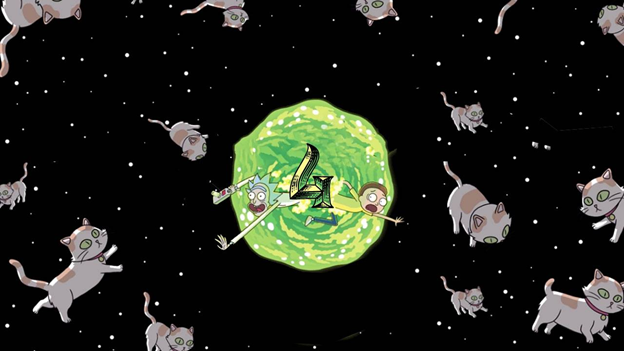
25. RICK AND MORTY (Adult Swim)
To say RICK AND MORTY has become something of a cultural icon the past decade would be a huge understatement. It’s frankly kinda shocking: few animated series, “mature” or otherwise, seem to possess the same ability to transcend modern television’s preconception of being “lesser” entertainment, especially in an industry full of gritty drama, true crime, and veteran series beating their respective dead horses. For a series literally conceived as a crude BACK TO THE FUTURE parody involving some good ol’ elderly teabagging, the irony involved in not only becoming a household name, but also something philosophically poignant, is as endearing as it is deliciously absurd.
Personally, it’s hard to deny this irreverent sci-fi sitcom its title as one of the smartest shows on the air, even when I and so many others meme on its more… “devoted” fans. Showrunners Justin Roiland and Dan Harmon seem to know the limits of just how many low-brow benchmarks they need to check off in order to grab the audience’s attention, before immediately sucker-punching them with a heavy dose of absurdist humor, cosmic horror, and just the tiniest pinch of existential nihilism. An Adult Swim offering about the multidimensional escapades of an alcoholic supergenius and his awkward teenage grandson may not be the only show out there to question what is and isn’t good television (see: the two mostly-improv “Interdimensional Cable” episodes), it does so with a smile on its face, an air of intellectual bravado, and both middle fingers way, way up. Because really, isn’t that what we all want from quality adult animation? [Jon Farah]
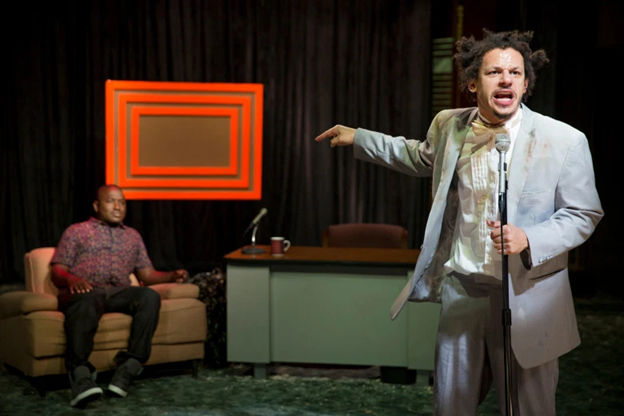
24. THE ERIC ANDRE SHOW (Adult Swim)
One of the initial, key ideas about Adult Swim as a network was to relish in wasting network time. Airtime is a valuable thing, and there was something hysterical and radical to throwing that platform in the garbage, or at least trying to set it on fire. Such was the ethos behind SPACE GHOST: COAST TO COAST, one of the crucial inspirations to Eric Andre’s parody of talk shows, television, and culture: THE ERIC ANDRE SHOW. Each episode kicks off with Eric Andre literally screaming and sprinting into frame, violently destroying the television set, his own house band, and himself. He brings a level of playful chaos that is both beguiling and terrifying. It puts into practice the radical notion of mocking the very foundation of television, and all the nuanced idiocies of its normality.
Fans of MTV’s zanier output found great purchase within Eric’s demented playground. The intelligence of the show comes through with its audacity and abrasiveness, willingly launching itself in the most idiotic directions possible. It’s a shameless melting pot and crackling tire-fire of terrible ideas made with charming ingenuity. Eric gleefully follows in the footsteps of fellow chaotic jester Tom Green by setting sketches in public and capturing the reactions of unsuspecting passersby, which are even more entertaining than the sketches themselves in certain instances. He creates situations of extreme social awkwardness, seeing how people come to action or fully run away from the most horrifying and unnerving things that occur in broad daylight. It’s Lynchian, and even feeds off of the cosmic wonder of Alejandro Jodorowsky’s works. You could describe it as “random,” maybe, but its tone has purpose in testing its own limits and existence. The S2 finale is nothing but the opening of the show, where Eric destroys the set, followed by overlaying every episode of the season on top of each other played at double speed. It’s the television equivalent of a snake eating its own tail, but happening in real time and just after someone set the snake on fire.
The aggressive mood swings and violent ridiculousness took internet culture by storm with memes being made of certain sketches, looks, and moments, which feels very fitting for just how chaotic and moody the collective culture has gotten in the world these past couple of years. Why not let Eric and his cartoonish look at life’s pains be an arbiter for universal understanding; yes, things are, have been, and always will be crazy, but at least it can be laughable at times. Andre and his cohorts will always be a step behind, since truth is somehow always wilder than fiction, but THE ERIC ANDRE SHOW is damn close to capturing a certain energy that life often emits and that drives all of us up a damn wall. It’s “mood.” Sorry. [Rocky Pajarito]

23. PATRIOT (Amazon Video)
People who work out regularly describe this phenomenon called “the burn”: a “good pain” generated by the build-up of lactic acid during exercise that can create a sort of high. I eat like shit and don’t put on weight, so I will never go to a gym and experience this sensation, but I imagine it must feel kind of like watching PATRIOT on Amazon Prime. More of an auteur-driven 20 hour movie a la TWIN PEAKS: THE RETURN than a traditional episodic series, PATRIOT is an unrelenting endurance test of how much hardship the viewer can stand seeing befall one man. Undercover CIA asset John Tavner’s descent into corporately-regulated hell is an exhausting, drawn-out trainwreck, but one that is impossible to avert the eyes from. Director Steve Conrad weaves such a wicked web of intrigue around John that it boggles the mind that any of it works, and each strand he cuts comes crashing down on the hapless agent like a ton of bricks. FARGO stans will no doubt recognize (and dig) the pitch-black humor, meticulous plotting, and deadpan delivery at play here, giving us a series that is somehow more Coen brothers than the officially-sanctioned (and also good!) FX series. It hurt me when Amazon pulled the plug on the series after its second season ended on such an uncertain note, but it cannot be denied that PATRIOT was the best kind of pain while it lasted. [Ed Dutcher]
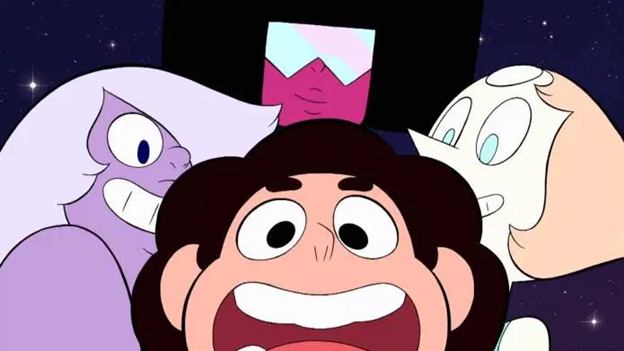
22. STEVEN UNIVERSE (Cartoon Network)
No one can deny that animated content has enjoyed an unrivaled boom in the past 10 years, and STEVEN UNIVERSE is both a contributor to and a result of that boom. Brought to life by Rebecca Sugar, an artist and writer who enjoyed a stint on another landmark animated series ADVENTURE TIME, STEVEN UNIVERSE premiered in 2013 and currently still airs with an OVA-esque continuation, STEVEN UNIVERSE: FUTURE.
STEVEN UNIVERSE began as a lighthearted comedy about a happy-go-lucky boy modeled after Rebecca’s real-life brother and his adventures with alien “gems”—Pearl, Amethyst, and Garnet—who help him discover his alien half, courtesy of his now-deceased gem mother. Viewers were hooked by the charming whimsy, genuine sweetness, and kindness that Steven and the gems portray, and became even more hooked once the plots started taking darker turns and more secrets were revealed. Soon, even innocuous jokes were being analyzed by thousands of YouTube creators, trying to find clues to support their own fan theories. Some theories became founded—some were just odd. (Does anyone remember when there was a theory that Onion was Yellow Diamond? No? Just me? Okay.) Just like Steven himself, the show grew up over the years from a fun, wacky alien adventure to dealing with crucial emotional issues, handling abusers, and overall, practicing forgiveness—all while carefully unfolding an eons-long secret. Everything from the writing to the beautiful animations and unique character designs is a step above what most cartoons have to offer, making STEVEN UNIVERSE very deserving of its smash hit status on Cartoon Network and its place on this list. [Anna Mansager]
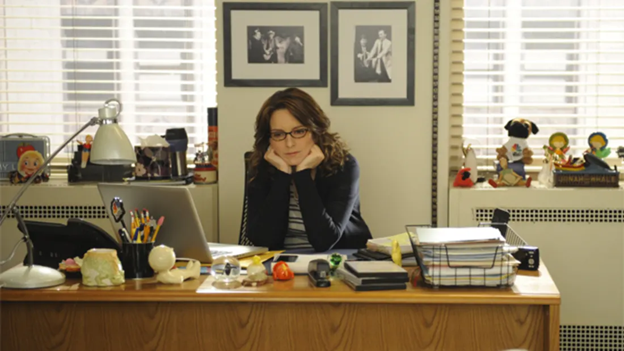
21. 30 ROCK (NBC)
Hope everyone had a good Merlinpeen! As a show about a show, 30 ROCK gave an incredibly verisimilitudinous glimpse into the going-ons within the media hub that was NBC’s 30 Rockefeller Center. The development of “Untitled Tina Fey Project” into the long-running meta humorous hit sitcom remains the network’s bravest risk. Not only could a show revolving around the production of SNL be better than SNL itself, it explained a number of facets within the building that eventually led to the sketch show’s downward trend, whether it be writers’ room shenanigans or corporate conglomerate chaos. Many forget that Baldwin’s Jack Donaghy is a literal representative of General Electric sent in to ease the company’s real-life acquisition. When Tracy Morgan was being slammed for tasteless remarks, the show took time to reflect on it. Throughout it all both one-liners and running jokes were as sharp as a tack, especially as legends came in to guest star, thriving on impeccable writing. Fat chance if we ever have Aaron Sorkin again poking fun at himself as he did in his cameo. It’s hard not to feel bad for Fey and her team because every time she tries to relight the inspirational spark that fueled 30 ROCK, be it on KIMMY SCHMIDT or SNL, it just hasn’t been the same. [Alec Larios]
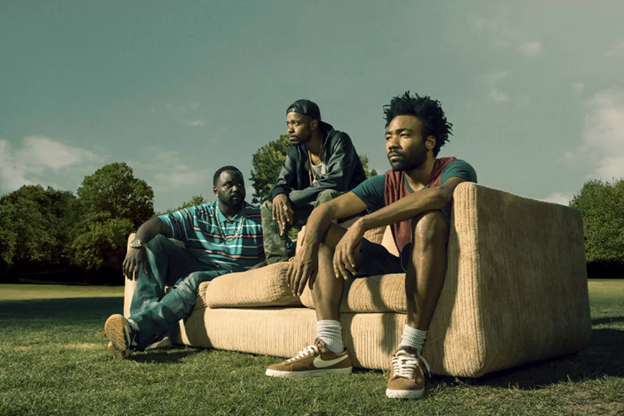
20. ATLANTA (FX)
I’m very white. I’m so white that I’m going to circumvent the usual joke here about loving mayonnaise or farm tours using ironic detachment. ATLANTA isn’t a show that’s meant to explain the experience of an American black person to white people. It’s an existential panacea of the different forms being a black person in America can take, and how thoroughly bizarre some of those forms can be. The series begins with the premise that we’re going to follow Paper Boi’s (Brian Tyree Henry) rise from poverty to stardom, but it quickly branches out in multiple directions. Each episode feels like it could be a stand-alone project, with S1E7 and S2E6 being the most obvious examples. (S2E6 is also, in my opinion, the funniest single episode of anything ever made.) ATLANTA has no interest in explaining anything to its audience, and the boldness with which it embraces that is its strongest quality. If you’re confused by it, it’s probably your own fault.
Despite being Donald Glover’s show, his character Earn Marks impacts ATLANTA’s narrative equally or less than almost every other main character. Like a post-modern SEINFELD, episodes vary their character of focus. Some episodes follow Earn’s struggles with poverty and self-worth and Paper Boi’s battle with the side effects of newfound wealth, and others move all the way over to Darius’ (Lakeith Stanfield) shamanistic spiritual journeys and Van’s (Zazie Beetz) vaulting ambitions that keep getting grounded by reality. My favorite, and presumably many other’s, has to be Darius. While the rest of the cast react to their absurd tragedies with anything from bemusement to shock, Darius maintains the stoic yet welcoming demeanor of a man who has seen the future and knows that he is but a small cog in the grand machine of the universe.
ATLANTA broke new ground in ways obvious and obscure. The obvious ways were featured in headlines, like having an all-black writing staff and boasting the first African-American to win an Outstanding Direction for a Comedy Series Emmy. But ATLANTA also pushes the boundaries of post-modernism, often being so ethereal and surreal that watching can feel like a transcendent experience. I don’t know what’s going to come after post-modernism, but ATLANTA wants us to think they do. And based on the first two seasons, they just might. [Dan Blomquist]

19. GAME OF THRONES (HBO)
Damn. What else can be said about the show to end all shows? GOT enraptured the entire world and will forever be remembered as the last series to do so before the streaming wars were fully unleashed. Every single episode was an event. So very many of us were there for every twist and turn, even as the whole thing devolved into an absolute clusterfuck. Worthy of note when looking at this as a whole, George R. R. Martin’s original intention when writing A SONG OF ICE AND FIRE was to circumvent the studios, which limited his creativity with budgets, focus groups, and whatnot. Little did he know it would become one of the biggest productions of all time and spawn dozens of copycats within that very system. Rather than the boobs and violence, what truly kept us along for the ride was the strength of the show’s characters. With a cast in the thousands, all with varying backstories and goals, at least one was bound to hook you in. Whether it be Tyrion’s wit or Brienne’s undying devotion, we wanted our faves to overcome the unforgiving realm they were placed in. It’s truly heartbreaking that it became a cynical, frenzied death pool by the end, but at the very least we can look back at our shared experience fondly and look forward to the REAL conclusion in the upcoming books… hopefully. [Alec Larios]

18. SUCCESSION (HBO)
I never thought I would need to hear the words, “Buckle up, fucklehead,” but now, I honestly can’t imagine ever hearing anything else. HBO’s SUCCESSION feels like what you’d get if you took GAME OF THRONES (sans dragons) and KING LEAR and mixed up both in a blender made by Rupert Murdoch. It’s brazen, dirty, absurd, and impossible to turn away from. The first season, a bit of a haphazard introduction to the Roy clan, is excellent but takes some time to warm to. As a new viewer, it can take a minute to get the hang of the show and I found myself asking questions like: where exactly are the jokes and who’s the good one? Once you settle on the fact that everything is hilarious and everyone is terrible, the fun really begins. In this age of “Peak TV,” it’s easy to notice trends as they start to crop and re-crop up in more and more shows. The dysfunctional family drama with the stern patriarch at the core is nothing we haven’t seen before, and yet, the powerhouse team behind SUCCESSION (Adam McKay, Will Ferrell, and Jesse Armstong, to name a few) have succeeded in making a show where it’s nearly impossible to predict what’s going to come next.
In addition to the meat of the show, what makes it even more special and profound is the knowledge that it likely could not have thrived in the way it does in any time but now. In the early 2000s, we had THE WEST WING which eventually gave way to VEEP, the blustering and darker sibling of the former. In our current society, we’ve grown angry and cynical, equally frustrated and fascinated by those who wield so much power. SUCCESSION couldn’t have come in a better era.
Without delving into any spoilers, the show’s second season is some of the finest and funniest television I’ve seen in awhile. The finale had me both sobbing and laughing, before eventually screaming into my television. With a confirmed S3 on the way, it feels like the reign of SUCCESSION is just getting started. Buckle up, fucklehead. [Anna Thorup]
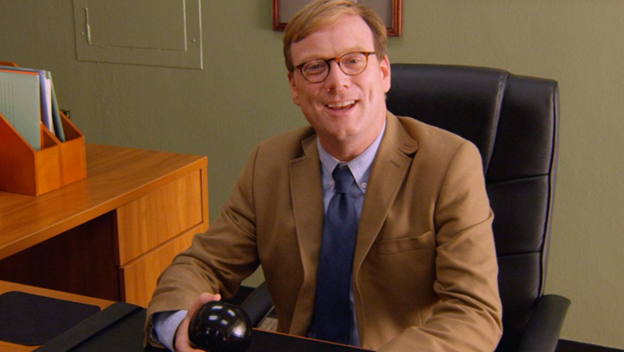
17. REVIEW (Comedy Central)
REVIEW was the right Andy Daly vehicle at the right time and, like most good things in this world, it was short-lived. Having made a career out of playing principals and doctors, Daly’s glasses-wearing, straight, white guy demeanor tends to supersede his actual comedy instincts, which are not only some of the sharpest around, but also zany as hell. A remake of an Australian show (REVIEW WITH MYLES BARLOW), the premise is deceptively simple: a mockumentary review show in which the host, per the intro, doesn’t review “food, books, or movies,” he reviews “life itself.” Daly’s Forrest McNeil gives everything the ol’ college try in an effort to satisfyingly determine quality and, of course, give us that ever-so-important star rating, from reviewing making a sex tape (⭑⭑⭑⭑⭒) to curing homosexuality (⭑⭑⭒⭒⭒) to divorce (no rating). While the show certainly works in a vacuum (“Road Rage; Orgy” is a great singular episode), watching McNeil slowly destroy his life due to his dedication to reviewing things is among the funniest things produced this decade, each episode slowly ruining McNeil’s life one review at a time. The combination of Daly’s oafish and committed performance and the writers’ slow-burn build across two-and-a-half seasons is a comedy feat that writers should be studying and pining over for throughout the 2020s. Much like Forrest McNeil inevitably would have been had he been asked to review buying a firearm or going to war, the show was gunned down in its prime, but it’s some of the tightest comedy of the decade. [CJ Simonson]
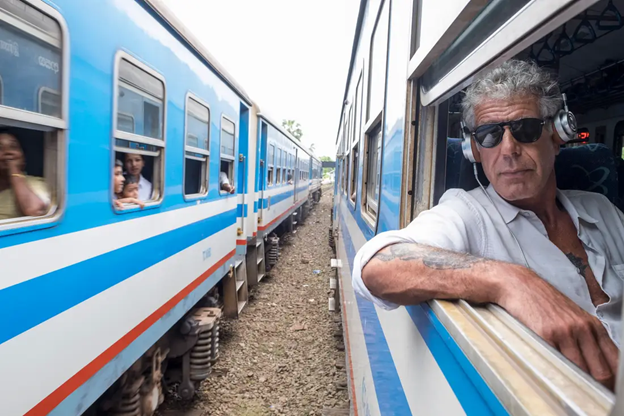
16. ANTHONY BOURDAIN: PARTS UNKNOWN (CNN)
I visited my Grandpa over the Thanksgiving holidays and PARTS UNKNOWN came on as we channel-surfed late into the night. We both ended up getting a little verklempt, as it was the episode where Bourdain traveled to the Jersey Shore he’d experienced as a child to sample a whole bevy of fried, grease-laden comfort food nobody remotely associated with fine dining would give a second glance to. It reminded us both of our summers together during my own younger years, when my family would travel to Brigantine Beach: those were the roads we’d driven down, those were the snacks we’d gorge on after a long day in the sun and sand, and Bourdain’s own reflections on halcyon days gone by weighed heavily on me, nevermind my Grandpa.
Honestly, I’m not sure if there’s any stronger justification for PARTS UNKNOWN as one of the best television programs of the decade than the fact that Anthony Bourdain eating fried clams and drinking beer almost made me burst into tears. No matter where he went, no matter what he ate, no matter who he met with, PARTS UNKNOWN saw Bourdain approach everything with a measured level of respect and curiosity, contributing to a “food show” that was so, so, so much more. PARTS UNKNOWN was a travel show, exploring obscure corners of the world and major metropolitan locales with equal excitement and vitality. PARTS UNKNOWN was a political show which saw Bourdain always making an attempt to explore the larger sociopolitcal umbrellas of the dishes we often consume without consideration, never shying away from getting a holistic perspective on some of the world’s more complicated conflicts as a result. PARTS UNKNOWN was a storytelling show, Bourdain’s wit and wisdom shining through in the narratives he constructed so effortlessly. But most importantly, PARTS UNKNOWN was simply an excellent window into the life of one of America’s late treasures, Bourdain resting easy as a fundamentally good person that brought good into this world, only to tragically lose the battle with his demons. I miss you a lot, Tony. [Thomas Seraydarian]
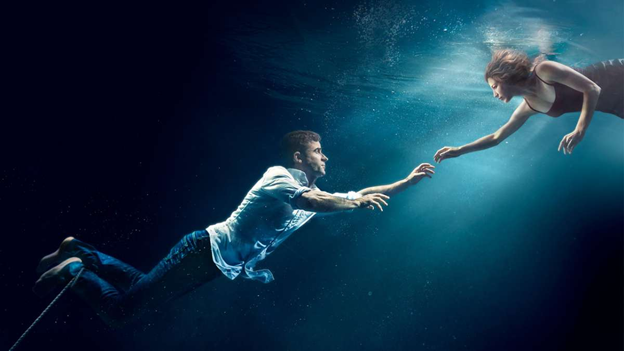
15. THE LEFTOVERS (HBO)
If one way of viewing the last decade of television in the U.S. is as a slow-motion reaction to a collective loss of innocence, than THE LEFTOVERS is the final statement on that pain. THE LEFTOVERS makes a home in grief, in the inevitable confusion of tragedy and the horse pill-sized truth that is the idea that things didn’t suddenly become bad, they’ve always been bad and sudden tragedy forces us to face that. THE LEFTOVERS was set in a post-Rapture world (in the show’s parlance, the Sudden Departure), following the day-to-day lives of the citizens of an upstate New York town as they come into conflict with their pasts, each other, and a growing group of cultists obsessed with dredging up everything that’s been pushed down so that people can attempt to move on. Unlike what its premise would suggest, it’s wholly committed to character, even taking the time to feature standalone episodes focusing on the experiences of its principal cast, something increasingly rare in the heavily serialized TV landscape.
As the show moved on, changing settings, upending the core mystery that was the engine for its plot, and adding on new cast members, it only deepened everything that made it good. THE LEFTOVERS could feature a Purgatory-set spy story, a lion-sex cult and a prophet who removed people’s pain through bear hugs and still remain grounded because of how much attention was paid to characterization. It was never about the mystery, it was about how the characters felt for each other. THE LEFTOVERS hung on past potential cancellation because of its strong critical reception, but it achieved greatness because of a keen understanding of the human experience: that often the greatest kindness you can offer someone is to believe them. It was that heavy lifting in writing and performance that allowed the show to end so gracefully, and secured its spot among the decade’s and medium’s best. [Ian Campbell]
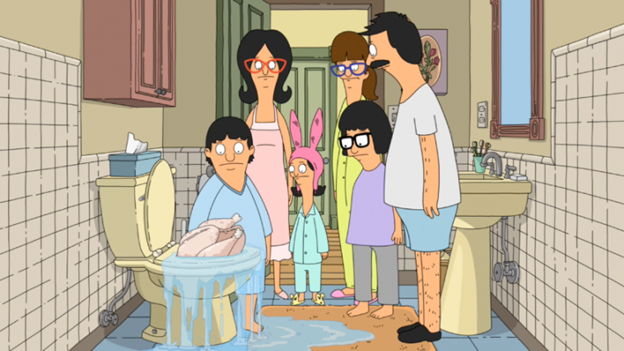
14. BOB’S BURGERS (FOX)
We all need comfort TV. A core part of the American experience is coming home from work, making dinner, and sitting down to watch characters we love get into hijinks we know will be neatly resolved in roughly 21 minutes. No show provided that easy comfort quite as well as BOB’S BURGERS this decade. The Belchers, the sweet, goofy fuck-ups who always love and support each other no matter what happens, are the ideal of what a nuclear family could look like. No matter how much they embarrass and frustrate each other, you always know the Belchers will ultimately do the right thing for the lovable weirdos who color their lives. Everyone on BOB’S BURGERS is deeply, deeply flawed, but in a way that the other characters around them largely accept and adapt to. Bob is high-strung, Linda is overly dramatic, Tina is insecure, Gene is stubborn, and Louise is angry, yet you never for a second doubt that this family is going to hold itself together in the end.
It was remarkable how strong BOB’S BURGERS was straight out the gate, how fully formed the identity of the show felt from the pilot. It’s been amazing to watch it deliver so consistently across 10 seasons. The musical numbers, the burger puns, the shockingly dark comedic beats, all seem to have tumbled out of Lauren Bouchard and Jim Dauterive’s brains fully-formed. Sure, some episodes stand out as true classics (see: every Thanksgiving episode), but quite frankly, it’s difficult to name a downright bad episode of the show.
In the transition to streaming this decade, BOB’S proved itself to be the perfect show to stream due to its easy consistency, right up there with THE OFFICE and FRIENDS. Perhaps one of the secrets that has made the show so strong is that it didn’t try too hard to comment on current events, rather focusing on references to classic movies and building out its own weird extended universe, making so many of the episodes feel timeless no matter when you watch them. The show was nothing short of a blessing, easy watching in turbulent times, it will have a devoted fanbase for decades to come. [Carter Moon]
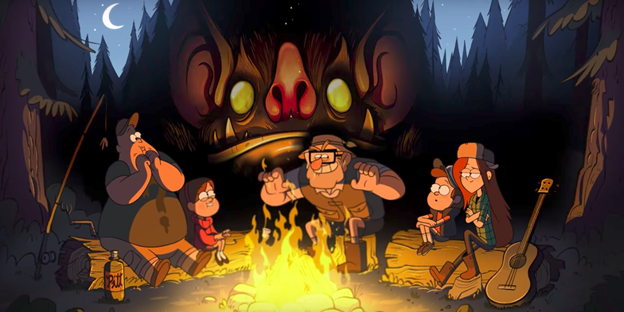
13. GRAVITY FALLS (Disney Channel)
For as cynical as most of us internet-goers can be about TV the past 10 years, there’s at least one point of positivity: the industry’s done a good job at reinvigorating the animation landscape, making it feel more alive and diverse than it’s been in decades. As a functional adult who keeps tabs on a totally not excessive amount of animated shows, I can comfortably say there’s not a single cartoon from the 2010s toeing the line of “All-Ages” perfection better than GRAVITY FALLS.
This two-season show created by Alex Hirsch is, without hyperbole, the best product that modern Disney has or (probably) will ever produce. Not since 1994’s GARGOYLES has Disney created a property so appealing to the kid in all of us, while being so dark, intriguing, disturbing, and genuinely dramatic at the same time. However, unlike GARGOYLES, GRAVITY FALLS manages to retain its high standard of quality throughout its entire 42-episode run, never losing stride and only getting more engaging as it leads to its inevitable, literal insanity of a finale. The ensemble of colorful characters is robust and layered, with leading and bit parts alike proving to be much more than what their comedic kids-show archetypes portray on the surface. The show’s predilection for contrasting childhood whimsy and wacky hijinks with an almost Lovecraftian sense of the macabre gives it a unique tone unlike any other show on the market. Its exploration of intimate themes like connections, trust, and the sad realities of growing up give GRAVITY FALLS a heart almost completely alien to the Mouse House. The overarching mystery that permeates nearly every episode of this supposed “kids” show not only leaves all audiences guessing (yes, even us 4D chess-playing adults), but genuinely surprises by how many intricacies, lore details, and veiled hints we may have missed along the way.
It may not have lasted nearly as long as most other popular shows this decade, but it’s definitely among the most impressive, especially when it comes to family-friendly animation. I sincerely doubt Disney will ever produce something as risky or genuine as this again, but here’s to hoping they prove me wrong. [Jon Farah]
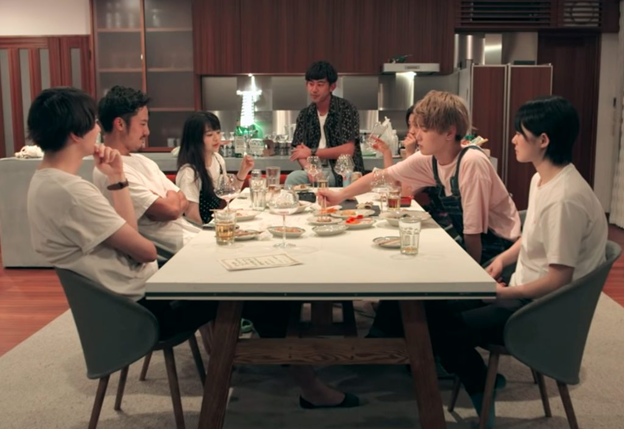
12. TERRACE HOUSE (Netflix)
As someone who feels as if I’m perpetually playing catch-up with various media zeitgeists, it was a pleasure to have my finger on the pulse of TERRACE HOUSE fairly early on and see it blossom into a full-on cultural juggernaut in real time. Having long captivated audiences in its native Japan, 2015 saw TERRACE HOUSE: BOYS AND GIRLS IN THE CITY quietly appear on American Netflix, picking up steam entirely by word-of-mouth until 2017 was inundated with several “must-watch” thinkpieces. Three seasons later, and TERRACE HOUSE comfortably enjoys its place at the top of alternative reality television.
With a straightforward and easily accessible premise—six Japanese young adults left to work, hang-out, and date in a ritzy home somewhere in Japan—TERRACE HOUSE is all the more resonant for how unassuming it is. Whereas most American and British reality shows push their participants into scenarios where tensions run high, whether they stem from conflict or passion, the participants of TERRACE HOUSE mostly… just kind of coexist peacefully. However, the seemingly lower stakes make the intimations of drama land with Herculean force. A contestant holding hands with someone they shouldn’t feels like more of a clutching-the-pearls moment than any horned-up sexual encounter LOVE ISLAND could promise. It’s an impossible-to-recreate tightrope walk between comfort and anxiety, a soothing antidote to the garish blaring of most stateside programming that still manages to grab the attention and have you six episodes in the hole before you remember to blink. Well… aside from the commentators, in any case. Shaking things up with a mechanic wherein the show cuts away to six well-known members of the Japanese entertainment industry, all of whom mercilessly rip the contestants a new one for the most minor infraction, TERRACE HOUSE’s grabbag of cultural specificity and universal humanism made it a staple on the television in my apartment in the latter half of the decade, something entirely unique we’d never really been privy to in the US of A. All I know is that a show that made two grown-ass men jump up and down screaming “Oh shit” when someone ate another person’s meat from the fridge was doing something right. [Thomas Seraydarian]
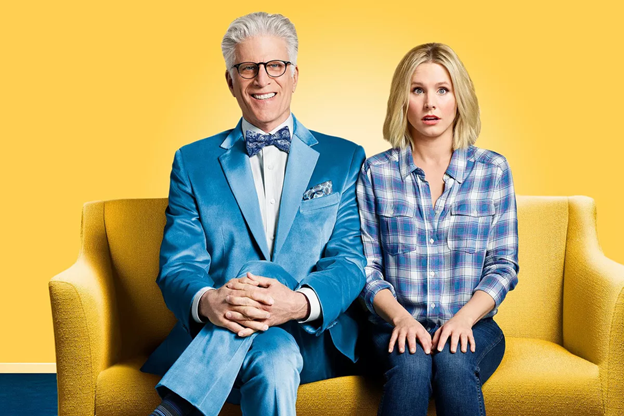
11. THE GOOD PLACE (NBC)
THE GOOD PLACE started its ambitious run by satirizing metatextual elements common to American sitcoms and only cloaked itself in more layers of complexity as it continued on. It realized the very specific hell that is the sitcom set-up: the rigorous forced friendships, the banal meeting places and the completely rote conflicts, and made the awareness of that awfulness the very firmament of its structure. THE GOOD PLACE would be a horrifyingly misanthropic show if it wasn’t, in beautiful opposition, a show deeply committed to empathy as both a quality and a practice. It’s that delicious structure that makes THE GOOD PLACE so compelling, along with a ridiculous commitment to cliffhanger endings that drive the plot forever forward.
Placing its miserable characters in what amounts to a sci-fi mystery show of LOST’s ilk gives THE GOOD PLACE a strange and powerful energy: a comedy committed in a strange way to plot, but stacked with rich comedic characters. Kristen Bell as Eleanor has a field day with this sort of material, vacillating between almost stupid, callous selfishness to a fumbled but earnest kindness within the same scene. GOOD PLACE can also claim the introduction of one of television’s best characters in Janet, the A.I./Not-Human whose fumbles through romance and other human affairs provided ample opportunity for humor and heart. It’s that layered application of strong, game performers with ridiculous and intricately plotted writing that made THE GOOD PLACE into a critical darling, and as it now works its way through its final season, an excellent act to follow Michael Schur’s success with PARKS AND RECREATION. [Ian Campbell]

10. COMMUNITY (NBC)
Let’s talk about S4. After battles with NBC and Sony, not to mention a public fight with star Chevy Chase, Dan Harmon exited COMMUNITY—he would return for S5 in one of the strangest things to happen on network TV in a long time, but nonetheless his absence instantly became that season’s most defining trait. And for all of the criticism that David Guarascio and Moses Port got for lacking Harmon’s genius or vision, those were big shoes to fill; that there are serviceable and watchable episodes speaks just as highly to Harmon’s genius, which was almost painfully a guiding presence in the writers’ room, as it does to the bonafides of the show he built, from the premise to the cast to the unique aura the show had perfected by the end of S2.
But of all there is to say about S4, and there’s a lot to say, it provided one of the show’s best episodes, “Basic Human Anatomy.” I can’t think of another network sitcom that could lose its omnipresent showrunner and through the sheer will of everyone still involved be able to pull off an episode that so fully understands the delicate and deft balance of its own spirit. The central storyline, a FREAKY FRIDAY riff that comments on male friendship, breakdown of communication, and our inabilities and faults at expressing true emotions, sticks a very difficult landing, not to mention delivers some of the season’s biggest laughs as we watch the Dean pretend to body switch with Jeff. Telling funny, tender, and ultimately human stories through the multiple layers of pop culturisms and community college politics was a unique and strange achievement deserving of the fandom and praise it saw, but it’s important to recognize that there was perfection running throughout this show—even in the show’s darkest timelines. COMMUNITY never fully recovered from S4, with S5 being a semi-return to form before the choppy Yahoo!-based S6, but its run was one of the most fascinating and ultimately satisfying things to be a fan of throughout its surreal run. Let’s get that movie. [CJ Simonson]

9. I THINK YOU SHOULD LEAVE WITH TIM ROBINSON (Netflix)
The year is 2069. I’m on my deathbed, surrounded by throngs of loved ones and fans after becoming a wildly successful TV critic. I lift a trembling hand to call the love of my life over, so I can impart to them the words I want to be the last that I say while resting on this mortal coil. They lean in close, close enough to feel my wheezing breaths lacerate their eardrums. With my very last vestiges of strength, I bellow: “You suck, Paul! You have no good car ideas.”
That’s how funny I THINK YOU SHOULD LEAVE is. It is 86 minutes of pure concentrated joy. Looking to what the future of TV will be, ITYSL has achieved the Platonic ideal of the bingeable series. Considering the relentless pace and laugh-a-minute writing, I’d be impressed if anyone could resist slurping this down in one gulp. What further propels ITYSL into GOAT territory is that it seems to have predicted what it will become: A cult comedy classic akin to the works of fellow surrealist comedians Tim Heidecker and Eric Wareheim. The jokes feel designed to be repeated ad infinitum amongst stoned college co-eds and irony-poisoned millennials. A single errant quote like “That’s a Chunky!” or “I make 10 times what you make!” has the potential to transmit the virus to curious bystanders who will either join the cult or decide to ignore your recommendations from now on.
Thus is the power of any cult comedy series, but what sets ITYSL apart is sheer self-awareness. The sketches are separated by no more than five seconds of ‘70s-style vocalizations, smashing from sketch to sketch knowing that laugh tracks and transitory materials are unnecessary. If we’re going to move past post-modernism as a society, I THINK YOU SHOULD LEAVE takes a step towards that by mastering its genre, then subtly stepping back and letting its audience fully immerse themselves before making a valiant return. Even if the second season sucks and this truly was lightning in a bottle, we’ll always have the bad boy of the competition, Bart Harley Jarvis. [Dan Blomquist]

8. NATHAN FOR YOU (Comedy Central)
It’s almost ethereal in its connection to the current temperature of our country, but NATHAN FOR YOU captured our society’s relationship with media, and each other, in the most convoluted and impressively chaotic way. Nathan Fielder’s show appeared very quietly in 2013, and accidentally forced its way into mainstream awareness with several bursts of internet virality. “Goat in the Water” and “DUMB STARBUCKS” utilized the unexpected responsibility of a platform for the sake of observational beauty. Nathan and his crew took the tone of a TLC-style reality show and emphasized the act of existing within this reality being somewhat pathetic and false, whilst also sincere and revealing of human truths words can barely describe. In microscopic terms, it captured how we all as humans simply desire to be seen as we truly feel; the protagonists of our own stories, with obstacles and feelings and a need to overcome and grow.
The gradual adaptation to life Online has given everything a tonal basting of dadaist off-centeredness, with Twitter being a hive mind that can make anyone on it question their sanity. Truth is stretched and emotions are high, giving glimpses at struggling humanity. There’s a joy and pain to the humor derived from NATHAN FOR YOU simply capturing people trying to get through a cockamamie scheme that makes them deeply uncomfortable. Discomfort is something we try to avoid for ourselves, and yet cannot look away from when it occurs to others, or on stage. Stunts on this show like turning a bar into a technical “theater” to justify the legalities of smoking inside an establishment touch upon the very nature of this show’s meta-textual ridiculousness. But NATHAN FOR YOU reached its signature brand of jaw-dropping when it committed to brilliantly terrible ideas, and when it placed the humiliation square on its lead and hero.
Nathan Fielder’s performance as himself (can it even be considered a “performance”?) is a humbling feat of exposing oneself through embarrassment and insecurity. Fielder ostensibly assumed his role as the lead to a cadre of unsuspecting strangers—who are just barely grasping the gravity of being on television—and used his position to humiliate himself as a means of making everyone feel connected and understood through cosmic vulnerability. He created a layer of honesty that elicits reactions of mutative quality, combining dread, laughter, catharsis, and sometimes disdain in one gasp and burst. It functioned like a never-ending magic trick, where the levels of how hard the magician is messing with his subjects, and even audience, grew deeper and deeper in possibility. Its finale, a feature-length episode entitled “Finding Frances” was discussed and praised by critics in high regard. It was like a thesis statement on the show’s overall thoughts on truth being evident through our actions, and perhaps the lack of necessity in broadcasting every beat that happens in the stories of our lives. But in the end, NATHAN FOR YOU acts as a testament to the enjoyment of the circus: being in the audience, being on the outside, and accidentally finding yourself in the middle of the ring with clown makeup slathered on your face. It’s beautiful, thoughtful, hilarious television that weaponizes discomfort in a way that makes it one of the best experiments ever committed to the medium. [Rocky Pajarito]

7. VEEP (HBO)
What makes a politician? Politics have been on everyone’s minds more than usual these past few years due to the world crumbling around us. We sometimes forget to take a step back and examine who these people are that wield the tools to save or destroy us. THE POLITICIAN very recently did a wonderful job of depicting a nascent political mastermind, but VEEP spans the entire decade chronicling THE POLITICIAN’s end result. VEEP shows us that not only are politicians the reptilian monsters we imagine them to be, but inhumanly devoted to the concept of power for its own sake. Showrunner Armando Iannucci set out to remake his well-received send-up of British politics THE THICK OF IT with an American twist. He assembled the absolute perfect cast for the job and captured the absurd callousness of the power-hungry animals who wield more power than anyone else on planet Earth.
Selina Meyer (Julia Louis-Dreyfuss) encapsulates every negative trait of every politician ever, so it makes sense that her journey to the presidency involves disgusting actions often pulled right from headlines that hadn’t even been written yet. Notable moments of prescience include some easy predictions and some that raise some eyebrows and lower some jaws. Still, there’s not exactly a direct line that can be run through Meyer and Trump, Obama, Cheney, Biden, or any Oval Office figure because Louis-Dreyfuss imbues Meyer with a vivacious energy that stands apart from the alien, icy nature of real-life executive branch politicos.
The supporting cast ranges from ruthless get-it-done type-As who are just hairs away from being candidates themselves to dunces and greaseballs looking for the biggest possible score. The former comes to us via Meyer’s two Chiefs of Staff Amy Brookheimer (Anna Chlumsky) and Ben Cafferty (Kevin Dunn), the latter from Dan Egan (Reid Scott) and Mike McLintock (Matt Walsh). Resting atop all of them is the devoted lackey, true believer, ever-present Igor Gary Walsh (Tony Hale). Each represent the pillars of evil necessary to support the goliath that is our political process. Watch this show for a cathartic, hysterical glance at what goes through the mind of those who kill billions from the comfort of their thrones. As many currently working in American politics have noted, reality is less THE WEST WING and more VEEP. [Dan Blomquist]
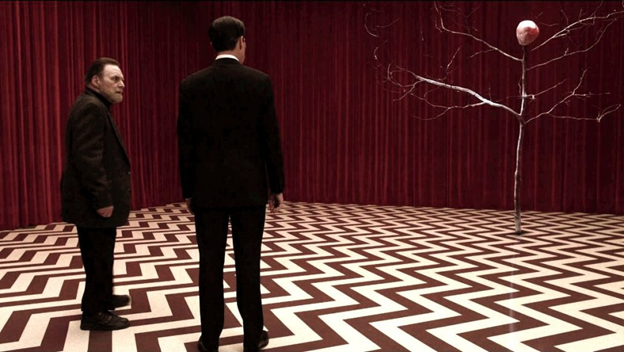
6. TWIN PEAKS: THE RETURN (Showtime)
The early 2010s’ charge to recycle established IP only tightened its death grip on the neck of popular culture throughout the decade. To have a series prime for the picking resist the urges of its own fan base so daringly made for the decade’s most exhilarating, yet demure, but horrifying, but also serene piece of media. It was every perversion and serial adventure tale of the 20th century sublimated into a single, prestige summer TV event. Lynch crafted TWIN PEAKS: THE RETURN for people like himself: TWIN PEAKS fans who hated TWIN PEAKS. He destroyed canons, denounced idols, and created new superheroes. It led to a polarizing split of reactions, but provided an insight to the self many didn’t realize they needed, especially not in the form of a 25-year-delayed television revival to a legendary director’s purest, goofiest, and most accessible foray into kitsch.
Lynch knew that this was his largest audience. He knew that this was his greatest opportunity to say all that was left to be said. A life devoted to selfless acts of kindness may not revert the nuclear genesis of evil, but it gives us a chance to make sense of a hostile landscape. Lynch’s all-hands-on-deck approach to a lore that got away from him trims so many of the beloved quirks—several fan favorites never return, while others do in service of vignettes wherein they never interact with old friends. The melancholy is thick: you don’t remember an old friend for their heroic act, you remember how they sat at their desk or how they drank from their favorite mug. Lynch serves up some of his most horrific imagery (the glass box…) counter-balanced against moments of saintly purity, both guiding us toward modern fiction’s ultimate lesson in altruism: “Fix your hearts or die.” As is the case for the characters of THE RETURN, the elusive solutions to life in fragile bodies lie in the moving image. It’s why TWIN PEAKS: THE RETURN is the only television program, from this decade or any, that I got a piece of tattooed onto my body. In a filmography of ambiguities and puzzles, the key for the intimidated viewer is to approach each Lynch project as a dreamy odyssey of absolutes. It’s easy to believe in demons, but TWIN PEAKS: THE RETURN makes the most convincing case for the presence of angels. [Kevin Cookman]
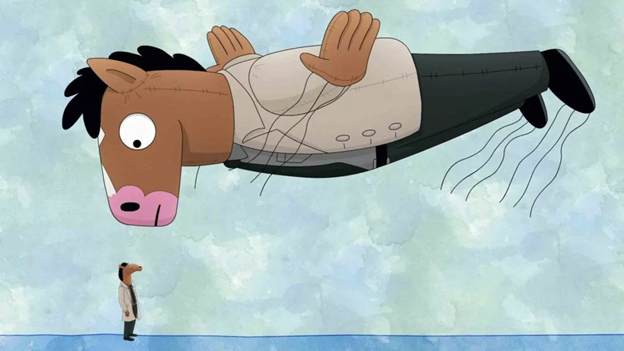
5. BOJACK HORSEMAN (Netflix)
If you’d told me in 2010 that one of the top five shows of the decade would be about a depressed cartoon horse, I certainly would have been surprised. If you would have also added that this same show would become my favorite show of all time, I would’ve been gobsmacked. BOJACK HORSEMAN is in a class all its own, even among the best shows of the decade. Although it’s notorious for its slow start, since about midway through the first season, it hasn’t missed a single beat. As we prepare to say goodbye to our favorite problematic horse on January 31st, it is my complete privilege to include it on our list of the best shows of the decade.
BOJACK is a series that could only be made in the 2010s. It was Netflix’s first adult animated original series, and its success paved the way for BIG MOUTH, TUCA AND BERTIE, LOVE DEATH + ROBOTS, AGGRETSUKO, and more. It uniquely capitalized on everything streaming and animation had to offer: arc-based storytelling, exquisite production design, top-notch writing… the list goes on. It also captured many hallmarks of life in the 2010s: inheriting the mistakes of our parents, living with depression and anxiety, feeling out-of-place in the world, failed relationships, the impact of fame and internet culture… and yet, while many other series touched on these themes, few did so with the bonkers sense of humor BOJACK did. Tell me another show that could feature a failed suicide attempt, a funeral, and a harebrained scheme involving an ocean full of pasta and a couple hundred spaghetti strainers all in the same episode. Yet, this tonal dissonance never comes across as curt or disjointed. This series is so special because it captures the high highs and low lows just as they occur in real life: all intermingled and happening together in a bizarre, darkly comedic soup. The batshit insanity of being alive in the 2010s is something we’re all still trying to understand as we leave this decade, and no series nailed it better than BOJACK.
Although it certainly defined our decade, I am confident BOJACK is a series that will stand the test of time. It feels like the culmination of all animated content up to this point. It capitalizes on the versatility of animation by taking big storytelling swings. “Free Churro” is just BoJack reading a eulogy in its entirety, while “Fish Out Of Water” boasts no dialogue at all. It finds ways to depict the intangible like emotional labor (“The New Client”) and intrusive thoughts (“Stupid Piece of Shit”) that hit home. It doesn’t shy away from the real: sexual assault and the #MeToo movement, abortion, infertility, mass shootings. Without spoiling the most recent season, it captures the reality of being a woman in Hollywood in the most subtle, blink-and-you’ll-miss-it way imaginable that gutted me to my core. It is truly a masterclass in story. I don’t know how to put it any other way.
You couldn’t ask for a more iconic cast. BoJack, Mr. Peanutbutter, Todd, Princess Caroline, and Diane are all expertly written and sharply designed. They are cartoony in all the right ways, but have depth to rival any live action series you could name. Bojack, Princess Caroline, and Diane are largely self-explanatory in this department, but the way Todd and Mr. Peanutbutter have developed over the series into fully-realized, complicated characters is just fantastic. Even the side characters feel so integral to the story, it’s hard to imagine the show without them: Sarah Lynn, Hollyhock, Pickles, Esteemed Character Actress Margo Martindale… my god!
BOJACK HORSEMAN is the very definition of an Outstanding Animated Program (despite never having won an Emmy—which is outrageous). It did more than any other series this decade to push animated storytelling into the mainstream, and in doing so, reshaped the entire television industry for years to come. It’s bittersweet to see the series end, but I am so excited to see it stick the landing. It is—and will be—my favorite show of the 2010’s. [Kate Brogden]

4. FLEABAG (Amazon Video)
Healthy or not, I often find myself categorizing events in my life around the media I consumed at the time. The Fall in Boston where I sank into EAST OF EDEN. Playing Lorde’s second album during June at the start of a new relationship. The winter I cried often after a break-up while listening to 808S & HEARTBREAK on repeat (dark days). And now, blessedly, there’s another period to add to the mix: S2 of FLEABAG. I was an early fan of S1, consuming all eight episodes in one sitting in my best friend’s studio apartment one afternoon. Instantly, I was hooked on the world, charmed by Phoebe Waller-Bridge (who isn’t), and blown away at how fast a scene could go from side-splitting to gut-wrenching. It felt like such a clean, tidy, and neat season of television with a clear beginning, middle, and end.
Then, S2 came along. The second season, like the Hot Priest it features, came in with a bang. From the first shot, where Fleabag (Waller-Bridge) wipes the blood from her face in a restaurant bathroom before looking up at the camera to say clearly, “This is a love story,” I was hooked. Much has been said (rightfully so) about the chemistry that exists between Waller-Bridge and Andrew Scott, accounting this primarily for the show’s unexpected success. While there’s no doubt that both professionally and classically trained actors are truly perfect together and seem to exude something not unlike actor’s-porn, the real brilliance of FLEABAG has always come from the pace and structure. Waller-Bridge is completely thoughtful about the bits of information she doles out and when. Both the first season and the second feel like perfectly packaged entities in a way that’s so rare in television. No beat, no joke, no plotline, no turn of the head is ever wasted. It’s breathtakingly compact and full to the brim of wit and heartbreak.
While the season of FLEABAG has all but passed, I still often find myself thinking of moments of the show randomly during the day or turning back to specific episodes to rewatch scenes again. That, really is, the mark of a great show. [Anna Thorup]
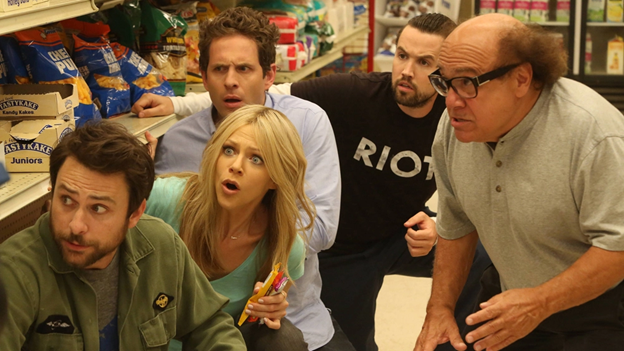
3. IT’S ALWAYS SUNNY IN PHILADELPHIA (FX / FXX)
In a decade where most media directed its focus towards righteous characters staring down the barrel of fascistic opposition (or shows making a clear case not to endorse our hero’s criminal or otherwise immoral behavior), there’s something oddly comforting about a series whose entire ensemble remained zealously—and devilishly—corruptible. Cue IT’S ALWAYS SUNNY IN PHILADELPHIA, which appears to have made its mark by being the sharp left turn in a decade of safe right-turn maneuvers, a uniquely hip show about a crew of sociopathic narcissists who run a bar that is obviously not located in (!!!) Philadelphia, Pennsylvania.
The fact that SUNNY is still going strong 14 seasons in (in spite of an admittedly bumpy seasons 9-13), is just another testament to its capacity to tap into the current zeitgeist; perhaps the only show to sardonically acknowledge our shared millennial angst over a world that expects utmost civility in a relentless socioeconomic climate. It’s television’s most punk rock product, an extended metaphor for all our repressed rage, anxiety, and inhibitions, like one big march of solidarity for our inner weirdo. If the devil on my shoulder would pick any show this decade, it would be SUNNY, if only for the fact that it speaks to my repressed deviant as the only show on television to actively say and do everything I thought we’d never be allowed to broadcast on television.
As such, if there’s one term to remember IT’S ALWAYS SUNNY IN PHILADELPHIA by, it’s counter-cultural. It’s a series that, in spite of its sitcom veneer, built an unmistakable cult of personality around its unsympathetic—and yet highly relatable—gang of protagonists. [Sergio Zaciu]

2. BREAKING BAD (AMC)
For as much as Marvel and GAME OF THRONES dominated pop culture, there’s a strong case to be made that BREAKING BAD was truly the biggest piece of fantasy escapism from this decade. Audiences loved Walter White because he was a remarkable foil through which you could imagine shattering your own dull, suburban confinement. If you got the opportunity, maybe you too could be clever enough to evade the feds and murder drug kingpins. Maybe you could build your own drug empire, if you just were willing to risk it all. In so many ways, Walter White was obviously a villain, and yet even Vince Gilligan was astounded at how much audiences identified with and supported him until the very end. He was a modern cowboy, a gangster, a genius. He was every myth about powerful and rebellious white males that had played out across the entire history of American cinema, all converging into one person. We loved Walter fiercely, we hated Skyler on his behalf, we cheered when he blew up two men in a nursing home. The dark journey BREAKING BAD took us on taught us a lot about ourselves, and not everything it showed us was pretty.
None of us were ready for BREAKING BAD. We didn’t know what to do with what was effectively a 62-hour movie, with production quality higher than a lot of studio films. It felt so, so good to shut yourself away and watch an entire season in one sitting thanks to this newfangled website called Netflix, soaking in the darkness as it played out on screen. This new feeling of being able to indulge on this level, to feast on hours and hours of high-octane drama, was a high we would all chase for the rest of the decade, to increasingly diminishing returns.
There will never be another BREAKING BAD. The precise formula will never be achieved again, the exact circumstances will never converge perfectly for all of us to be ready to receive something like it. The world of BREAKING BAD may have been fantastical, but we were all perfectly primed to want to believe in it. Our cultural conceptions of the war on drugs, of drug addicts and drug dealers, have shifted pretty dramatically since the show aired. On a rewatch, it’s harder to root for Walter when you know his product is largely exploiting poor people self-medicating through a disease, even if these people are treated as an afterthought in the series. Despite all these criticisms, I would do anything to go back to the feeling of watching the show for the first time, as any of us would. The rise and fall across five seasons felt like it was rewiring our brains to watch drama differently. Vince Gilligan and company clearly understood how to precisely tap in to a specific moment in cultural history and blow it wide open. A new way of exploring the American identity emerged with the series, a way of taking rugged individualism and grit to its absolute limit, and we’re going to feel that impact for generations. [Carter Moon]
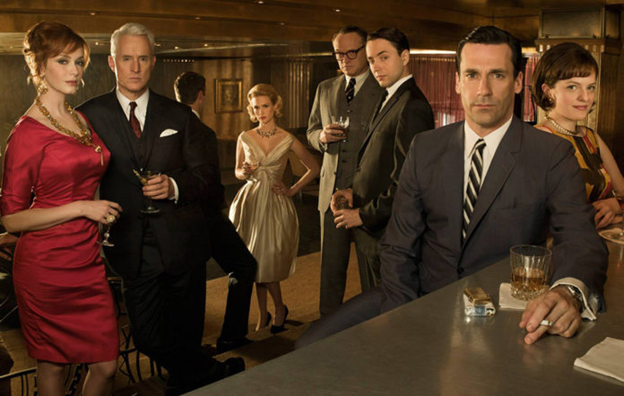
1. MAD MEN (AMC)
A man’s life disintegrates around him and he leaps into oblivion. It doesn’t take more than two episodes to pick up on the metaphor in MAD MEN’s opening credits, but from the day it premiered to the second it ended, fans of AMC’s period megadrama wondered just how literally they should take the sequence. For a show with stakes as low as . . . advertising, the specter of death is pervasive in MAD MEN. Self-loathing white guys are to TV leads as grains of sand are to a beach, but I don’t think any have stared into a mirror with such hatred as Don Draper. Why is this man so broken? How much lower can he go? What will happen when he hits rock bottom?
Finding the answers to these questions is, more than any of the accounts or affairs, the driving conflict of MAD MEN. We like Don for his square jaw, the way he smooth-talks the ladies, and… well, because he’s such a darn rascal! Yet even the ad executive’s biggest apologists grew disgusted with him as the show drew on and he refused one lifeline after another. That’s also what’s so sobering about the portrayal Don’s affliction. There’s no manic hippie dreamgirl to rescue our hero, no tragic act of God to snap him out of his ways. It’s just something he has to live with.
Fortunately for Don, and viewers’ sanities, MAD MEN is not a nihilistic show, or even a dour one. Matthew Weiner helped guide THE SOPRANOS to a morbid end, and while MAD MEN is inextricably tied to HBO’s mob drama, Weiner’s own show is governed by much more uplifting themes. In perhaps its only underrated department, MAD MEN is also hysterically funny. The series is, yes, very mature, but it also knows what levity is and how to use it. It’s why moments like Don and Lane’s sad bachelor NYE man-date (and ensuing debauchery) comes off as wholesome and delightful instead of heartbreaking. Even the heaviest moments come with some kind of punchline padding to dampen the impact. That’s not to say MAD MEN is complacent in its reassurance, but that it at least offers its heroes a glimmer of hope that was never afforded Tony and his crew—though it helps that none of them are violent felons!
And I haven’t even mentioned Elisabeth Moss! Eat your heart out Offred, Peggy Olson’s rise through the ranks at Sterling Cooper is the grand-slam female empowerment tale to beat. On the other side of the coin, Peggy’s mother/protege relationship with Don is singular in television writing, and the chemistry between Moss and Hamm is pure platonic lightning. The way Peggy comes to own the show alongside Don is a credit to both Weiner’s vision and Moss’ unparalleled ability to realize it.
There’s so much else to rave about this show. Pete’s redemptive arc and antics! Kiernan Shipka giving possibly the greatest child performance ever! Everything Roger says! MAD MEN is a gift that keeps giving, chock-full of stellar roles and casting choices, brilliant plotlines, and some of the strongest TV episodes out there. Nothing but love for the last great primetime drama. [Ed Dutcher]


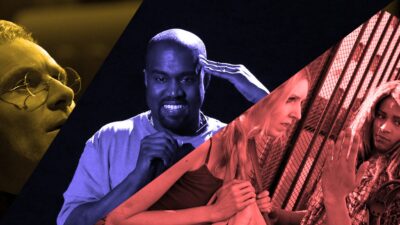
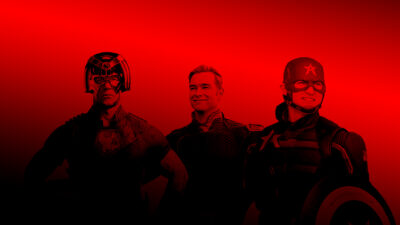

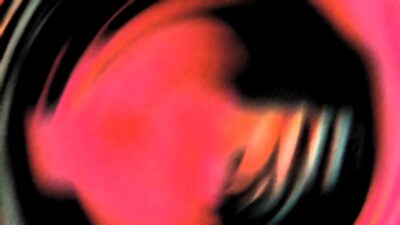
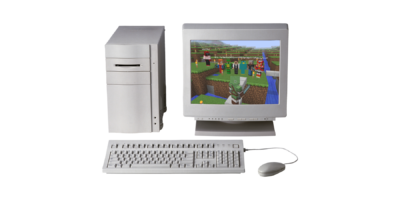

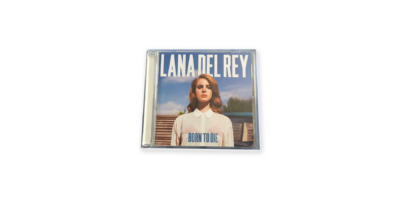
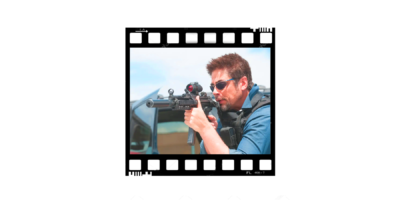




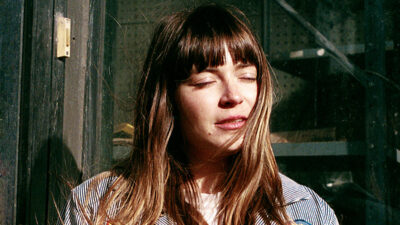

No Justified makes me sad.
[…] like to reiterate this whole magazine’s stance on Terrace House for those who haven’t tried it out yet: no, seriously, it’s brilliant television, and the […]